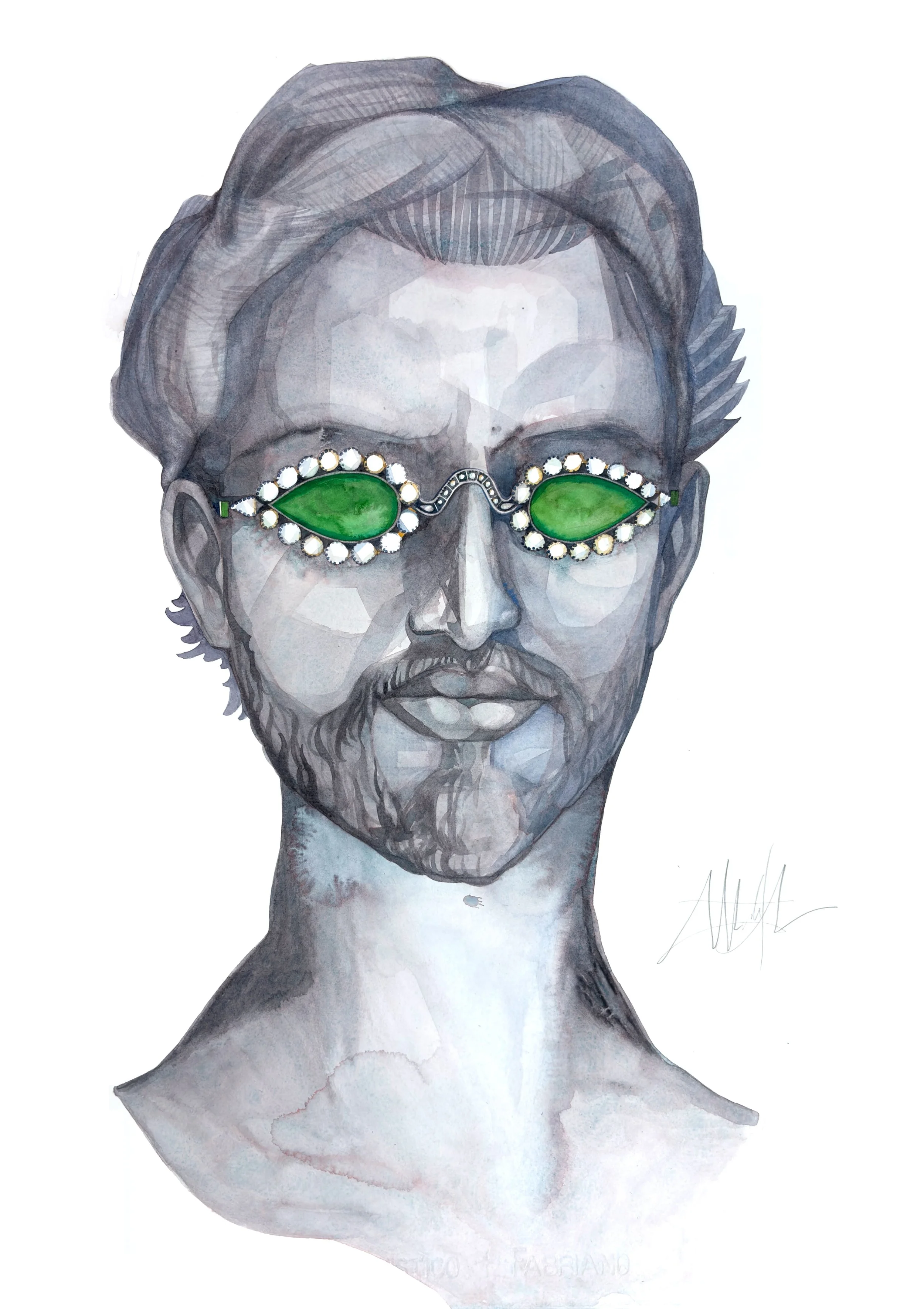Shah Jahan Reclaims his Spectacles
Shah Jahan Reclaims his Spectacles
$3,319.00
22”x30” watercolor painting float mounted in a custom museum-quality wood frame
Price includes 8.63% sales tax and fees. All sales final.
In 2021, a pair of spectacles went up for auction at Sotheby’s. The diamond-mounted frames set with emerald lenses date to the 17th century court of Shah Jahan, never before on public view. The owner who put them up for sale remains anonymous.
These were likely looted from India, like the jewels plucked from the walls of the Taj Mahal which surfaced as hat pins in Victorian England: The Koh-i-Noor diamond, one of the largest in history, was acquired by Babur, founder of the Mughal empire, and contributed to Shah Jahan’s Peacock Throne. It now forms part of the British Crown Jewels.
The tales of Marco Polo first set off travelers seeking to exploit the wealth of India. Describing one king, he wrote, “Suffice it that he wears in all so many gems and pearls that their price exceeds that of a fine city. Indeed no one could compute the total cost of all the jewellery he wears. And it is no wonder he wears so many, considering that all these pearls and gems are found in his own kingdom.” In the 17th century, the Indian subcontinent was the sole source of diamonds in the world. The raw materials of splendor—precious fabrics, metals, and stones—still come directly from India.
The spectacles’ flat-cut lenses were originally conceived from emeralds that would have weighed over 300 carats. Dr. Usha Balakrishnan conducted an in-depth art historical study of these spectacles, noting a tradition established over two millennia in India that led to novel creations. As emeralds were held to have healing powers, Ebba Koch of the Institute of Art History in Vienna speculates, “For Shah Jahan in his extreme mental state of mourning for a lost beloved, looking through emerald glasses could have been…meant to strengthen and heal his vision…Eternal paradisiacal life was what Shah Jahan envisaged for himself and Mumtaz Mahal, and looking through the green emerald spectacles may have provided him with a foretaste of it.”
Sotheby’s describes the spectacles as “the ultimate expression of wealth, luxury, and aesthetic sophistication.” Pharell Williams commissioned a replica from Tiffany & Co. and continues to appropriate them without credit as his signature accessory.
Meanwhile, I was thrilled to observe the latest Ambani wedding festivities. Magnificent, elephantine Anant in his gold watches and fluttering silks is a poster boy for excess as he weds Radhika, daughter of a diamond merchant. Criticized as they were for the expensive celebrations, dripping in gems, the Ambanis reclaim for all of us a South Asian identity which includes “wealth, luxury, and aesthetic sophistication,” images of Indian opulence flooding mainstream Western media and providing an alternative to the persistent slumdog mantle of lack we are expected to bear, represent, and explain. We reclaim our heritage of lush fertility and abundance, refuse the insistence of those who disbelieve us, and carry on in exuberant splendor.

